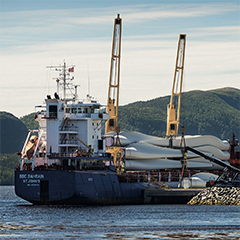All over the world, people are asking two questions: How will COVID-19 have a continued effect, and what will the next American President do? The pandemic has caused manufacturing plant closures resulting in predictable havoc, but we have also seen COVID-19 disrupt supply chains that were once rock-solid, in ways nobody could have anticipated. It’s uncertainty on top of uncertainty.
‘Nobody believes we’ve seen the end of what the pandemic will do to the global economy and the various industries that drive it, but we have always thrived in adversity and uncertainty,’ says an optimistic Randall Sullivan, Chartering Manager, BBC Singapore, ‘and our customers know we’ll work right alongside them to find our way in the ‘new normal’.
Supply chain disruptions resulting from COVID-19 have already caused problems for our clients, and they’ve been coming to us for innovative solutions to their rapidly changing transportation needs. We’ve been able to solve difficult supply problems, sometimes on very short notice, because we’ve got the ships and the people to do it. A fleet like ours allows us to mitigate schedule changes that arise from sudden changes in production’.
Who will be the next American President, and what will he do? What will be important to him, and what parts of the American and world economy will grow as a result? For those interested in the U.S. wind turbine market, the more specific question is, what will the next President do to support clean energy production? The Production Tax credit is set to expire at the end of 2020, and there’s no doubt that the PTC was instrumental in jump-starting demand for wind energy. The demand is there now, and it will almost certainly continue to grow. People want clean, renewable energy. Even so, additional U.S tax incentives would certainly help to grow the wind energy sector.
No matter the outcome of the Presidential election, the U.S. will continue to be the largest market for wind turbines, and carriers will continue to face the challenges of shipping to such a large and diverse geographic area, through ports that are often stretched to the limit of their capacity. A significant number of wind turbines enter the U.S. through the Great Lakes, which present their own vessel and seasonal restrictions, placing more pressure on delivery timetables at a time when pandemic-related supply chain issues are already complicating the process.



























